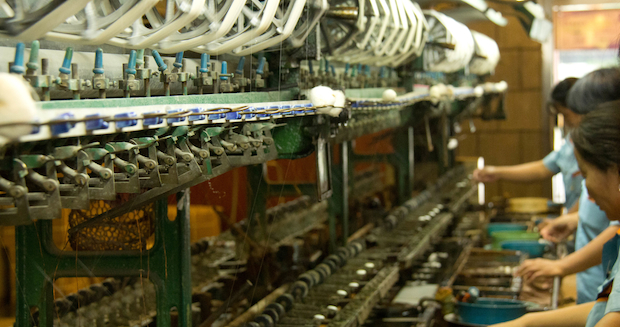CGBC Releases Groundbreaking Report on the Environmental Impacts of Wastewater Treatment Strategies
by: Sustainable Design News, 2011-10-19 05:41:24 UTC
 Capping two-and-a-half years of extensive water-related research, Cascadia Green Building Council released Clean Water, Healthy Sound, a groundbreaking report that uses Life Cycle Analysis (LCA) to examine and compare wastewater management practices in urban areas.
Capping two-and-a-half years of extensive water-related research, Cascadia Green Building Council released Clean Water, Healthy Sound, a groundbreaking report that uses Life Cycle Analysis (LCA) to examine and compare wastewater management practices in urban areas.
Using a mid-sized city in the Puget Sound region as a case study, Cascadia, measured a broad spectrum of environmental impacts associated with large scale, centralized sewage conveyance and treatment systems and compared them against smaller, decentralized alternatives.
The study identifies a direct relationship between low-density urban and suburban neighborhoods and substantial global warming impacts from pumping sewage across long distances.



mo: A New Mobility System
by: Sustainable Design News, 2011-10-19 07:04:27 UTC
 Under the direction of Munich design agency LUNAR Europe, a "human-centred" design process has been used to develop an innovative mobility system by the name of "mo."
Under the direction of Munich design agency LUNAR Europe, a "human-centred" design process has been used to develop an innovative mobility system by the name of "mo."
The concept study, developed in collaboration with environmental organisation Green City e.V. and the University of Wuppertal, is based on a flexible, affordable and sustainable combination of bike rental systems, local public transport and car sharing.
The eco-compatible mobility offering is meant to make a noticeable difference to the number of cars on the city streets, thereby cutting noise levels and air pollution and turning paths and roads into part of our living environment again.



Nano Book: Innovations for Small Dwellings
by: Sustainable Design News, 2011-10-19 18:39:29 UTC
 Space is at a premium in growing cities. In the countryside, we want to preserve nature and the landscape.
Space is at a premium in growing cities. In the countryside, we want to preserve nature and the landscape.
In impoverished parts of the world, the necessity for sustainable and economical shelter is stronger than ever.



A Little Brother for the Volt
by: Eco Geek Latest, 2011-10-13 17:00:36 UTC

Chevrolet is bringing out a new "city car" model to be available in summer 2012, and along with it, an all-electric version of the same vehicle will be available starting in California in 2013. Both the non-electric and the electric versions are called the Chevy Spark.
The Spark is a small car aimed at Millenial generation consumers, particularly those living in dense cities. "The Chevrolet Spark is 14 inches shorter than the recently launched Chevrolet Sonic. It’s three feet longer than the Smart Fortwo and four inches longer than the Fiat 500."
The gas powered version of the Spark will have an 83 horsepower (61kW) 1.2L four-cylinder engine. The company has not yet released specific details about the price, driving range or performance of the Spark EV, nor what markets it will be available in. However, according to the company, A123 Systems will supply the advanced nanophosphate lithium-ion battery packs that will power the Spark EV.
via: Michigan Radio
 Dow Chemical’s Bo Miller Discusses Sustainability
Dow Chemical’s Bo Miller Discusses Sustainability
by: Environmental Leader, 2011-10-18 10:08:13 UTC

Dow’s Bo Miller describes the three considerations to achieve sustainability: economic, social and environmental.
 Siemens Launches Wastewater Purifier
Siemens Launches Wastewater Purifier
by: Environmental Leader, 2011-10-18 09:03:20 UTC

Siemens has announced the launch of a specialty media that removes regulated metals from industrial wastewater, groundwater and storm runoff water. SCU Trace Metal Removal Media removes trace levels of metals such as copper, zinc, lead, mercury, cadmium, trivalent chromium, nickel and others from complex wastewater to levels the company says are not possible with [...]
 Ecodesk Trains Maersk to Save Fuel, Launches Sustainability Strategy Tools
Ecodesk Trains Maersk to Save Fuel, Launches Sustainability Strategy Tools
by: Environmental Leader, 2011-10-18 13:31:43 UTC

Svitzer Australia, a subsidiary of Maersk, is the first company to take delivery of Ecofloat 1.0, a digital training course which designer Ecodesk says will reduce fuel bills by over 15 percent. Svitzer will deploy Ecofloat at port facilities across Australia as a commercial pilot, leading up to a more complete rollout. Ecofloat takes users through [...]
 Nissan Builds 10-Minute EV Charger
Nissan Builds 10-Minute EV Charger
by: Eco Geek Latest, 2011-10-18 19:33:43 UTC

Nissan has announced that it has built a super-fast EV charger that can take your battery from drained to fully charged in a mere ten minutes -- a huge improvement over the typical eight-hour refueling time that most EV chargers require.
This new quick charger, built with help from Japan's Kansai University, was made by swapping out the traditionally-used carbon electrodes for tungsten oxide and vanadium oxide electrodes that proved to be far more efficient. One major drawback to this swap is that EVs today are made with charging components that work with those carbon electrodes, so EVs themselves would have to be updated to work with this new type of charger.
Nissan plans to fully commercialize this new charger, but it's likely to take about another decade until they're on the streets or available for your home. It's a drag to have to wait that long to see this technology produced, but it's also really exciting to imagine that in ten years you'll be able to recharge your EV in the time it takes to eat a snack.
via Inhabitat
7 Materials that could replace wood
by: Ecofriend, 2011-10-19 04:51:08 UTC
Biji Ravindran:

Resources that Replace WoodWays to a greener future
Owing to the expense of wood and the high cost of wooden furniture, companies are thriving in making use of useful materials to replace wood, so the entire process is cost efficient. Most of these materials are not only environment friendly, but are also easy on the pocket of the consumer. They have been found to be sustainable, making them the favorite choice of the many modern furniture designs.
Of these, a few can be safely used in home construction and other sturdy projects. Seven hand-picked substitutes for wood are discussed here.
- Bamboo
Thought considered a wood, bamboo is actually grass and is probably the most useful plant available in the world. The plant grows fast and this makes it an easy choice for making furniture and using for other projects. Bamboo is used to make products ranging from furniture like tables and chairs to furnishings like curtains and bedsheets. The uses of bamboo are extensive and its products are found to be eco-friendly, solid and sturdy. Bridges made of bamboo can be also found, and it is also used in creating beautiful floors for homes. Bamboo is also found to be used in making computer hardware like mice, hard drive cases, keyboard covers etc. Being a renewable resource, it is widely appreciated by environmentalists around the world to help make the earth a greener, safer place.
- Straw
The flax, oat and wheat straw are great alternatives to wood. It is a fiber and has a wide range of uses. For thousands of years, straw has been found to be used by our ancestors to make products ranging from bedding to art forms. Being easily available, straw is also used in building constructions mixing it with clay and earth. In some places, straw is used to provide insulation to wooden framed homes and structures. No wonder, straw is considered a cheaper alternative to wood.
- Hemp
Hemp is fast-growing, renewable, and easily available stuff like bamboo. Similar to the uses of bamboo, hemp is widely used in building construction and making other structures. It is also water proof, fire proof, lightweight and self insulating, making it a great choice to replace wood for home constructions. Its other uses include making paper, food products, fabrics, body care products, and even fuel. Hemp is one best choice to go green.
- Cork
Cork is really a wonder, as it can replace wood, being lighter than water, buoyant, impermeable, elastic and fire resistant. It has 50% air by volume and in certain countries like the United States, cork is being used in flooring or for insulating floors. It is warm and comfortable to walk on. Cork is also found to be used in sound proofing rooms and insulating warehouses. It grows faster and is sustainable than wood, making it a finer choice to use for construction and remodeling purposes.
- Soy
Soy is widely used to make shelves and cabinets and is proven to be very versatile. Though not a sturdy substitute for wood, the fiber is being used for insulation and carpet padding purposes. Besides these, soy has many health benefits too.
- Nutshells
Serving a variety of purposes, nutshells, basically that of almonds, hazelnuts and walnuts are ground into a paste and mixed with resins and molded to make furniture. Dollhouse furniture is usually made using walnut shells. Many arts and craft works are made using nutshells and the products are recyclable. Nutshells have many industrial and chemical uses as well.
- Plastic lumber
Recovered plastic or plastic mixed with several other materials is used to make plastic lumber, which could be a great alternative for wood and wooden products. Besides being used in making furniture, its other industrial uses include its use in making flooring and pallets. Reinforced plastic lumber is chemical and moisture resistant, making it last longer than wood. It is splinter free and is graffiti resistant. Being flexible, the plastic lumber can be shaped or curved easily, and requires less or no maintenance.
The creative alternatives of wood is not limited to these seven choices. There are several other renewable materials used in place of wood, though not for the many sturdy purposes served by wood. The aim is to preserve forests and to limit the harvesting of trees. This in turn reduces air pollution and other factors that affect the environment. Companies like Dell Computers are said to use bamboo fibers to pack their computers and other materials, which is surely a step toward a greener future.


 Meet China's Eco Cops
Meet China's Eco Cops
by: fast company, 2011-10-17 15:30:36 UTC
To enforce new rules from the government and U.S. companies, a new breed of worker is appearing in China: A consultant who helps factories adhere to standards, without causing outrageous costs.

China, the world's biggest emitter of carbon dioxide, is coming to grips with a serious pollution problem, much
of which is a fallout of its rapid growth as a manufacturing center. After years of growth and increasing pollution, the government began acting to
reverse the trend, and set targets like this five-year plan
announced in March, with goals to cut down on carbon dioxide
emissions, clean up heavy industry, and improve air and water quality.
In addition, companies like Walmart and GE have begun to respond to international
pressure to keep their supply chain healthy and clean, instead of taking advantage of China's lax environmental and labor rules. But actually implementing the practices set down by the government and big retailer--from interpreting the guidelines to be met, to
implementing without incurring too high a cost--is tricky. To help, a program in China is training sustainable minded hall monitors, who work with factories to find ways to keep their businesses in compliance without busting the bottom line.
Yang Yu is one of these new breed of eco-cops, working at a factory called Fortune Electric in China. Fortune makes transformers and supplies them to international companies like GE as well as Chinese companies closer home. In two years, he's helped bring Fortune's carbon emissions down 19%, from 752 tons to 610 tons, made the company more energy efficient, and decreased the time that its workers took off because they were injured.
Yu is a graduate of the Environment, Health and Safety Academy in the Guangdong province in China. It's headed up by Vermont-based Institute for Sustainable Communities, which partnered with Guangdong's Sun Yat-sen University to build a course syllabus based on the standards in place at Walmart, GE, Adidas, Honeywell and other companies that have supply partners in China.
Matthew DeGroot, ISC's senior program officer, tells Fast Company that the idea for the ISC EHS Academy was born when they held a conference of multinational companies to see how their suppliers were responding to company and government-suggested environmental, health and safety standards.
Audits revealed that some suppliers caught on and made the changes to keep up with the stipulations. But, the vast majority tried to find a way around them. "When we asked companies what made the difference, they all said the same thing," DeGroot said. It came down to a star EHS trainee. "There's a champion in the factory who gets it, who understands not just the technical aspects but also has the management ability to see how EHS fits into the businesses plan,” that person “really knew how to engage everyone from CEO to floor worker with that skill set."
At the time, China was running low on managers who had the know-how to keep up with Walmart and Co.’s demands, while keeping costs manageable for their bosses. International consulting firms offered courses that trained people for that, but they were expensive.
So ISC found their place in this "middle market." Supported by the local and national government health and environmental ministries and funded by the U.S. companies setting the standards, the consortium set up the Environment, Health and Safety Academy at Lingnan College at Sun Yat-sen University in Guangdong, "China’s factory to the world." "Our mission is to dramatically increase the pool of EHS talent in China," DeGroot explained.
Adam Lin is another graduate of the program, who is taking modular courses at EHS while carrying on his work as a sustainability consultant and manager for a number of suppliers who manufacture sports equipment and clothing for multinational companies. Lin took courses at ISC's EHS Academy sponsored by his company in 2009. He found it so useful, he plans to go back and take a few more courses, he tells Fast Company, this time on his own dime.
He says the course gave him a better idea of how to monitor and manage safety issues in the supply companies he oversaw. He better understood the government's guidelines and requirements about environmental practices, and learned how to work with the factory to implement changes. He's also got a deeper understanding of his job assessing and responding to injuries and emergencies on the factory floor. He got to know other EHS managers, and how they were dealing with issues of environmental sustainability and safety in the Chinese factories they interacted with, and it gave him the confidence to do his job better.
In the two years since the Academy launched, they're beginning to see results. They've trained 3,000 factory managers, and officially certified 500. Graduates like Lin and Yu have gone on to implement changes at the companies they work at, and more and more companies are beginning to see how they can conserve power and cut costs.
As a mark of a job well done, the course is gaining more support from the Chinese government and is on the way to be certified at a local and national level. The Guangdong Bureau of Labor and Social Security recognizes the program and is developing a provincial certification protocol for the Guangdong academy. A full 90% of the trainees rate their experience as "very good."
In April, ISC signed a commitment with the Clinton Global Initiative to "equip managers of factories all across China with the advanced skills they need to boost EHS compliance, rein in energy use, convert to cleaner energy, and achieve significant reductions in greenhouse gas emissions," and keep up their work in China well into 2012. ISC is also looking at expanding its reach to other places. They're looking at India next, and planning a collaboration with Pune and Nagpur--the manufacturing hubs for companies and businesses in nearby Mumbai.
[Image: Flickr user jorizdg]
Nidhi Subbaraman writes about technology and the environment. Follow on Twitter, Google+.








Comments by our Users
Be the first to write a comment for this item.